The ant is one of the world’s strongest creatures in relation to its size. Thus, a single ant can carry 50 times its own weight, and if an ant has backup, they can work together to move larger objects. Perhaps you’ve seen this before in your own kitchen, a line of ants marching away with crumbs of your favorite dessert. It’s at that point the typical person would quickly pull their phone out to find an answer to your question – how do I get rid of ants in the kitchen?
Fortunately, there are quite a few methods that can help you get rid of those tiny ants in the kitchen with a sweet tooth for your baked goods! The experts at Pest Pros understand ant pest control can feel stressful and everlasting (especially when you try to solve the problem on your own), so we’re here to eradicate the infestation before it gets out of hand, halting the ants right in their tracks. Continue this read to learn how to get rid of ants in your kitchen, and how to get a no-cost estimate from us.
Why Are There Tiny Ants in My Kitchen?
You’ve established you’ve got an ant problem and now you might be wondering why this is happening in your own home. Well, ants are reported as the most common pest in the country; you’re certainly not the first or the last person to experience an ant infestation, and it is often not indicative of your cleanliness. Ants can be found anywhere in your home, but kitchens tend to be their favorite because of the resources available to them there, including food and water. There are a few things to take into consideration about these ants:
You might notice ants in your kitchen during spring and summer when the weather is warmer because like most pests, ants are seasonal. Their activity begins to increase as the temperature rises and they make your home their homebase. Even in warmer winters, you might find these tiny ants on your kitchen counter.
Common Ants Found in the Kitchen
In the Pacific Northwest, the most common type of ant you will find in the kitchen is an odorous house ant, a.k.a. sugar ant, named for the stinky, metallic scent they emit when crushed. For the most part, these ants are harmless — but that doesn’t necessarily mean you want to share your home with them.
Odorous house ants are most often found in the kitchen because, as their alternate “sugar ant” name indicates, they’re attracted to moisture and sweet foods like fruit. Similar to other types of ants, odorous house ants multiply by splitting off from their main nest and starting a new colony in another location of your home; this behavior makes ant infestations notoriously difficult to remove completely as it requires you to locate and eradicate the main colony elsewhere in your home, which is often out of sight.
Carpenter ants are also commonly found in the PNW, but not often in your kitchen. Unlike odorous house ants, carpenter ants chew on the wood in your home’s structure, including walls and support beams, making them a more imminent threat to the integrity of your home.
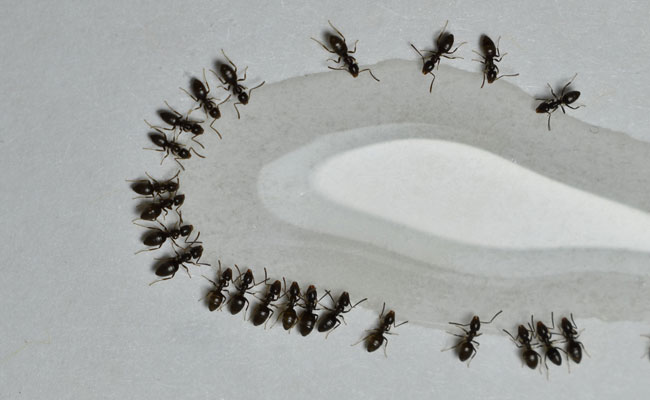
How to Get Rid of Ants in the Kitchen
Let us preface by saying that the best way to get rid of ants in your kitchen is to call a professional. DIY solutions, including those listed below, can be effective temporary fixes, but they often do not keep the problem from recurring. For the best results in eliminating ants in your kitchen, you should hire a licensed professional with the necessary materials and products. If you live in the Pacific Northwest, give Pest Pros a call or schedule a no-cost estimate today!
Otherwise, here are a few solutions that may temporarily resolve an ant infestation in your kitchen:
Natural Remedies – How to Get Rid of Ants in the Kitchen Naturally
There are a lot of resources out there claiming natural remedies to rid your home of ants, including white vinegar, baking soda, pepper, and a variety of essential oils. Unfortunately, most of these “remedies” are merely folklore, causing homeowners more headaches than if they had just invested in professional services from the start. White vinegar, for example, just erases the scent trails ants have made in and around your home and causes the ants no harm; at this point, the ants will make new scent trails to replace the old ones and will continue to colonize your kitchen.
The only effective way to get rid of ants in your kitchen naturally is to call a professional committed to ecofriendly and ethical removal practices, like Pest Pros.
Proper Food Storage
In general, we want to prevent situations from happening before they actually do; this is key to preventing ants in your kitchen. It’s critical that you clear any food remains, and keep your kitchen squeaky clean, so ants don’t have a reason to come lurking for food. Make sure that food is stored in tightly closed containers or sealed bags. Considering the ants’ preference for starchy syrups, you should be careful not to spill them, and if you do, wipe up any spills immediately. Overall, the cleaner your kitchen is the less likely an ant army will intrude.
Sealing Entry Points
As we mentioned earlier, ants come from a colony that is created somewhere in your home, so keep an eye out for where the ants’ entry points and exits are. Once you have a good idea of where they are entering from, you’ll want to seal cracks, holes, and crevices in your kitchen to keep your kitchen ant proof. Only seal these areas after you feel confident that the bait had a chance to work and that the ants from the colony have been eliminated. Again, this job is best left to professionals demonstrating expert understanding of ant behavior.
Elimination of Ant Colony
As humans, we’ve heard “communication is key” time and time again — but it rings true for ants as well. Ants leave a scent behind called pheromones to communicate, which are scent chemicals and are primarily used to locate food and water sources to other ants in a colony; this is why we typically see ants marching in a uniformed line. It’s important to understand this behavior as it can help you pinpoint where the colony is finding resources.
The ant colony could be hiding in baseboards, cabinets, door or window frames, and behind appliances. If you can spot the nest, we recommend that you apply product directly onto it to get rid of the ants.
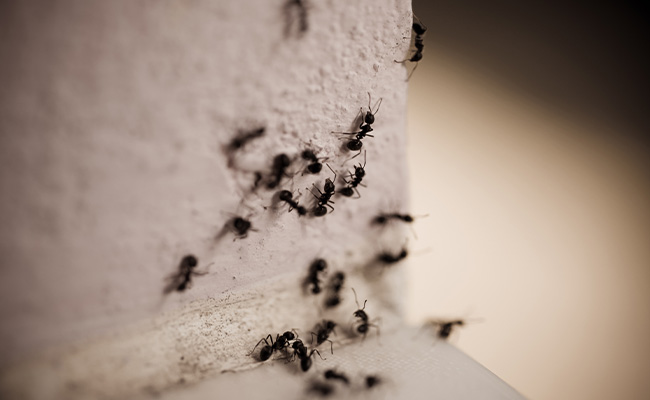
Call Pest Pros for Kitchen Ant Removal
Ants are small, smart, and resourceful, but Pest Pros is happy to help if you find an infestation in your home. As a team of licensed and local professionals who have extensive knowledge in the pest control industry, we want to aid your pest situation. If you live in the Pacific Northwest and need assistance with pest infestation, give us a call today. We hope to hear from you soon!
The combination of warmer, rainy weather and variety in evergreen trees and other native greenery make Seattle, Portland, and the rest of the Pacific Northwest a perfect habitat for pests. As a local pest control company, Pest Pros knows springtime can bring a rise to pest infestations — in particular, odorous house ant infestations. Once the weather begins to warm up and bugs of all kinds awake from their winterly slumbers, odorous house ants begin to create nests outdoors in exposed soil, often looking for indoor habitats after heavy rainfall because honeydew is no longer available when wet outside. If you’ve discovered an infestation in your home, read on to determine how to get rid of odorous house ants.
What Are Odorous House Ants?
There are more than 12,000 species of ants globally, each with distinguishing characteristics. Luckily for those reading this article, odorous house ants are one of the easiest species of ant to spot and identify; the most distinguishable characteristic of the odorous house ant — also known as, quite aptly, as the “stink ant” — is the pungent stink that permeates the nostrils when you squish them. Oftentimes, the smell is described as similar to “rotten coconut,” though several other interpretations have been thrown around the Pest Pros office.
Smell aside, odorous house ants are colored black or brown, measuring 1.5-3mm long. These little stinkers are tiny which makes it harder to deal with a house ant infestation, especially without professional services.
Odorous House Ants vs. Carpenter Ants
Carpenter ants are much larger than your typical house or sugar ant — measuring at a quarter-to-half-inch length. The most notable difference between odorous house ants and carpenter ants, however, is actually their diet; carpenter ants, as their name indicates, target wood to turn into a nest for their colony, posing a real threat to the structural integrity of your home. They will also leave behind wood shavings, called “frass.” If you discover signs of a carpenter ant infestation, be sure to contact a professional pest control company such as Pest Pros to determine how to get rid of carpenter ants in your house.
Odorous House Ants vs. Pavement Ants
Another notable type of ant that you should be aware of is pavement ants, which are similar to odorous house ants in both size and color. Appropriately named, they often set up shop in the cracks of the sidewalk outside your house.
Pavement ants are similar to carpenter ants in the way that they nest in houses. These pests create piles of dry particles and loose sand across tiles, baseboards, window sills, expansion joints, and other small enclosures in homes. If you discover signs of a pavement ant infestation, be sure to contact a professional pest control company such as Pest Pros.

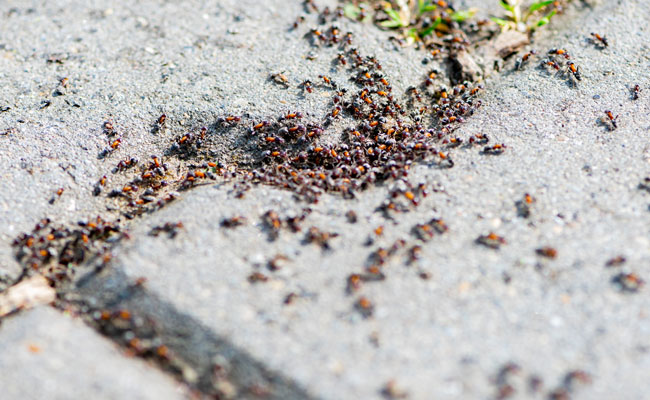

Do Odorous House Ants Bite?
The question on everyone’s mind! We’re regularly asked whether odorous house ants bite, and we’re here to relieve you of any worries on that front: no, odorous house ants do not bite, nor do they typically pose any real threat to humans. For this reason, most ants — along with other pests like flies and beetles — are often considered “nuisance pests.”
Why Do You Need To Worry About Odorous House Ants Infesting Your Home?
While small in physical stature, the danger of odorous house ants comes solely from the size of their colonies. If you spot one ant in your home, you can bet there are more; ants can create scent trails throughout your home, counters, and cabinets that can lead to an entire ant infestation. These ants’ small stature means they can sneak into your home even with good insulation, primarily looking for nutrients for their colony. Their colonies can quickly go from several ants to hundreds of thousands, making it a serious nuisance for homeowners.
Ants can be drawn to your home for many reasons, especially in areas that are kept unclean, house food, and other sweet substances. Infestations aren’t a matter of putting on your big shoes and stomping around until you’ve wiped out an entire civilization of house ants; these pests are persistent and tough to kill.
If you’re dealing with an ant infestation, you’ve got quite the challenge on your hands. It’s best to call a pest control company.
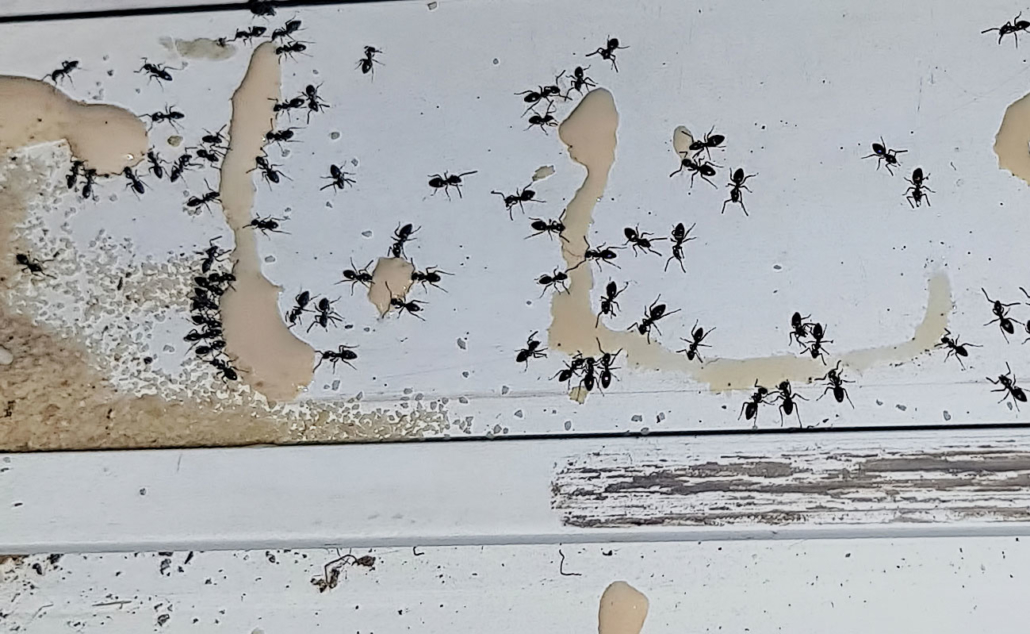
Signs You May Have an Odorous House Ant Infestation
It’s not too hard to identify an odorous house ant infestation given the number of house ants colonies and their speediness to infest; you’ll see them scurrying across your floors and counters once they’ve made their way inside your home. Because of their distinct smell when squished, odorous house ants are particularly easy to identify if you accidentally step on one.
Furthermore, ants will swarm during the summer months while winged ants will materialize near the nest. Swarmers are a clear indicator that there’s an infestation present. While it doesn’t take a professional to recognize signs of an ant infestation, it does take a professional to exterminate an ant infestation; be sure to contact a professional pest control company.
How To Get Rid of Odorous House Ants
Getting rid of odorous house ants, or really any pest infestation, can be incredibly nuanced; unless a homeowner has an expert understanding of the behavior of each species of pest, the infestation often returns or worsens after DIY attempts, frustrating the homeowner and making it more difficult for a pest control company to resolve the issue once they’ve been called. Odorous house ants can be particularly tricky as the smell they emit when killed can signal other ants to leave their nests and swarm your home.
The most effective way to get rid of odorous house ants in your home is to call a licensed professional, preferably one based locally with expert knowledge of odorous house ants in the PNW. To somewhat-unsubtly throw our name in the hat: Pest Pros is one such pest control company, and we’d love to help you rid your home of ants. Get a no-cost estimate on your home to determine the cost of pest control services for your unique situation.
To give you an idea of how a professional would get rid of odorous house ants in your house, we’ve outlined our typical process below:
Step 1: Inspection – Once the Pest Pros professional arrives on site, they will complete a full inspection of your home. They will inspect areas where these tiny ants are commonly found, including within walls near hot water pipes, crevices, heaters, sinks — and anywhere where sugar may be found.
Step 2: Treatment – After identifying the areas of your home the odorous house ants are living, the pest control professional will use commercial products to treat target areas, including:
- Treating around the foundation of your home. Ants are very social creatures, so, by treating the foundation of your home, the repellent will spread to every ant that the treated ant interacts with. After 2–3 weeks, professionals will return to the treated area to assess if there is any activity and if the treatment was successful.
- Drilling tiny holes in the wallboard, and injecting repellent into holes.
- Treating the interior of your home with repellent during late fall (when ants go dormant). To ensure the safety of the homeowners, professionals like Pest Pros will use a nicotine-based product that human residents of the home cannot absorb; they also ensure the usage instructions are followed, such as the number of hours residents should avoid the home after treatment, either exactly or more conservatively for the safety of the homeowners.
Step 3: Ant Exclusion & Maintenance – Our commercial products typically last for 6–8 weeks. Maintenance will be required to prevent the odorous house ants from returning. The maintenance program and intensity will depend on the season and the severity of the problem after an inspection of your home.
There are certainly things a homeowner can do on their own to prevent another infestation; in fact, following proper exclusion steps on your own is the most natural and effective way to get rid of odorous house ants in your home. No products needed!
Give these a try:
- Remove external access points of your home by trimming back shrubs and trees since ants will find and burrow through cracks after climbing plants.
- Clean your surfaces and wipe down counters after use to stop ants from feasting on grease and crumbs.
- When cooking in the kitchen or eating in various rooms, tightly cover food and properly store it.
- Remove pet food bowls when your animal pals are done with their meals. Ants don’t discriminate against dog or cat food–neither will mice, cockroaches, or other pests. They want to eat, too!
Each of these steps can be taken in your daily life to prevent pest infestations and maintain a clean and healthy home.
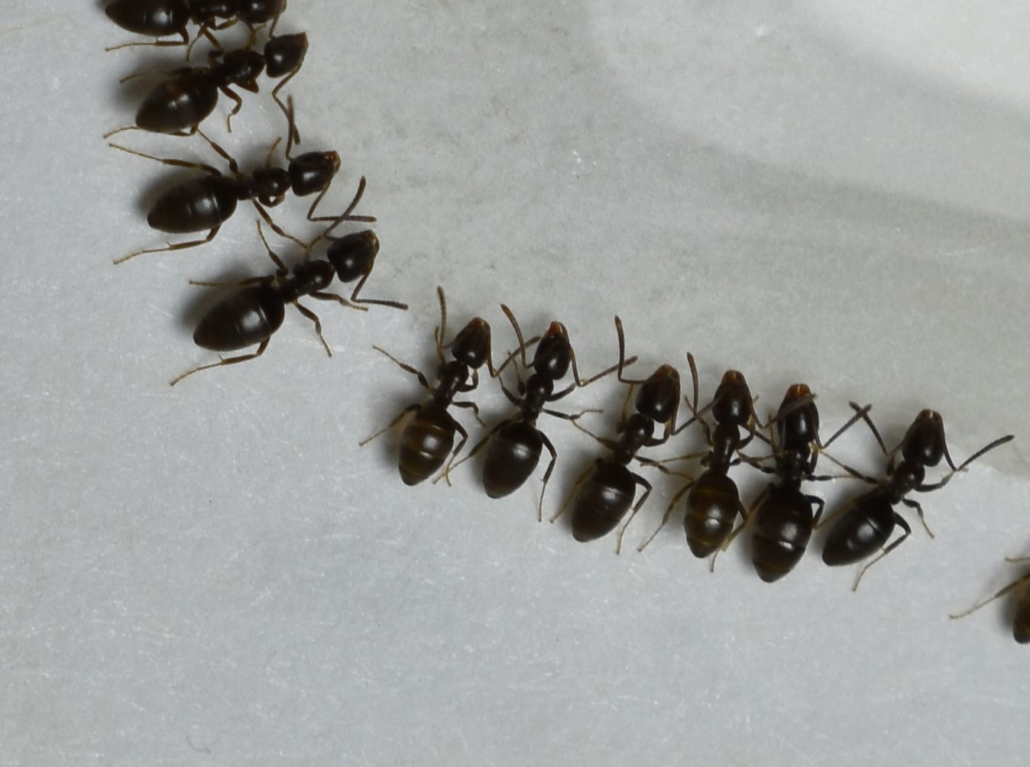
Call Pest Pros For Odorous House Ant Extermination
With all that said, odorous house ants and other infesting ants can be a pain to deal with in your home. Even if you have some success, the sheer quantity of ants in a colony means you likely haven’t gotten rid of all of them.
Where are you to turn if you’ve tried both preventive and extermination solutions and still have a pest problem? Pest Pros, a team of licensed professionals working for you, is here to be your partner in protecting the investment you have made in your home. There are many benefits to having the maintenance pest control service with Pest Pros. When we do find something that is or could be contributing to pest activity, we will make recommendations on correcting the condition.
Our team is prompt, professional, and dedicated to taking care of any and all pest problems in your home and getting your life back to normal. Call us or contact us for your free estimate today!
It may come as a shock that there are over 12,000 species of ants in the world (and we ant joking!). While most species are harmless, there are a few species that can be destructive, especially to your home. Carpenter ants are one of those species. Carpenter ants can cause major damage to the structural integrity of your home, by chewing the wood inside and outside of your home.
As a homeowner, it can save you a lot of stress and money if you can recognize the signs of a carpenter ant infestation and know how to get rid of them. Pest Pros is here to tell you everything you need to know about carpenter ants and the steps to take for ant control and extermination. Read on to discover how to get rid of carpenter ants in your house.
What is a Carpenter Ant?
Carpenter ants are named for their ability to build a nest by excavating wood and forming smooth tunnels inside of the wood. These nests are referred to as colonies and can contain up to 50,000 ants. Unlike other species of ants, carpenter ants will have a main colony and satellite colonies. Satellite colonies will primarily be established within a home and support the main colony located outside a home.


What do they look like?
Carpenter ants can be identified by their color, size, and shape. Carpenter ants are usually black, red, brown, red-brown, or red-black in color. Compared to other ants, carpenter ants are larger, about 3/4rd of an inch. They have six legs, an antennae, are segmented, and oval in shape.
How do they damage your home?
Carpenter ants are considered wood destroyers and are, compared, to termites. Unlike termites, carpenter ants do not eat wood and only chew wood to create a nest. Additionally, compared to termites, the amount of damage a carpenter ant can cause is far less; however, if the infestation of ants is not addressed over time, the damage can become severe as the nest grows.
What do they eat?
As mentioned, carpenter ants do not eat the wood they destroy. Carpenter ants eat other insects, such as aphids and other sugary insects.
Where do they live?
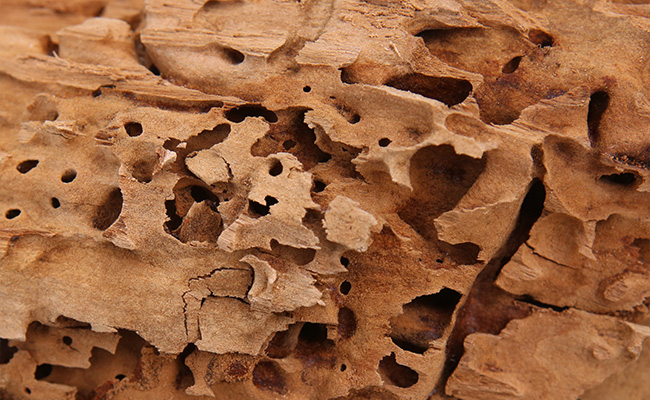
- Geographic region: Carpenter ants can primarily be found in areas with a large number of trees, such as Washington State. The rural and recently forested areas of Washington, such as Shelton, Gig Harbor, and Maple Valley, are prime areas for carpenter ants to live as they are heavily wooded and have a large amount of stumps to create nests.
- Area of home: Carpenter ants will target the large areas of sound woods in your home, such as beams, tresses, and joists. They will travel stealthily throughout your home by using wallboards.
- Do they bite? Carpenter ants do not bite humans. Thatching ants which are very similar in size and color to carpenter ants are the only ants to “bite” (technically, they sting) humans.
Signs of Carpenter Ants in Your Home
Recognizing the signs of carpenter ants in your home can be beneficial as a homeowner. It is also equally important to know why and how they get inside your home in the first place.
Carpenter ants will infiltrate your home when they’re looking for a new sound home to support their satellite colonies. They enter your house by either chewing their way through wood or climbing in through any crack. They will find their new home by using swarmers, which are reproducers, that fly and drop wings to find wood to create a colony (very few are successful in starting a colony). They will establish their satellite colonies in studs, walls, wood beams, and other areas of your home mentioned earlier. Primarily, carpenter ants prefer to target woods that are softened by water damage.
Unfortunately, finding signs you have carpenter ants can be difficult. One external sign of an infestation is small openings on the surface of the wood. Carpenter ants chew the wood and create galleys to live in, then spit out the debris, which appears as chunky thicker frass (fine wood shavings that are browner than dust). This thick frass is another external sign but can be hard to notice as it often looks like dust.
Since external signs are hard to identify, it can take a while to notice serious damage. The time it takes to notice external signs can also depend on the line carpenter ants create.
How to Get Rid of Carpenter Ants in Your House
As a homeowner, there are limited things you can do to help get rid of carpenter ants in your house if you notice the signs. Many homeowners opt for over-the-counter repellents to push the ants away; the issue with repellents, however, is that they will only kill ants if they come into direct contact with them, ultimately pushing the surviving untouched ants to an area that is more hidden and harder to reach. While repellents give off the illusion of a resolved issue, they will not push the satellite out entirely — and they also do not confront the original colony.
Over-the-counter repellents are not only ineffective at resolving the issue, but they also make the job more difficult for pest control professionals as they push the ants to harder-to-reach areas. For the sake of efficiency and effectiveness, we recommend contacting your local Pest Pros before attempting to resolve the issue yourself; this will ensure you have access to the best products and techniques for removing the entire colony.
To give you an idea of how a professional would get rid of carpenter ants in your house, we’ve outlined our typical process below:
Step 1: Inspection – Once the Pest Pros professional arrives on site, they will complete a full inspection of your home. They will tap wood beams to see if shavings fall out, check for small holes in other sound woods throughout your home, and check your crawl space to see where the ants are living.
Step 2: Treatment – After identifying the areas of your home the carpenter ants are present, the pest control professional will use a nicotine-based, commercial product to treat target areas, including:
- Treating around the foundation of your home. Ants are very social creatures, so, by treating the foundation of your home, the repellent will spread to every ant that the treated ant interacts with. After 2–3 weeks, professionals will return to the treated area to assess if there is any activity and if the treatment was successful.
- Drilling tiny holes in the wallboard, and inject repellent into holes.
- Treating the interior of your home with repellent during late fall (when carpenter ants go dormant). To ensure the safety of the homeowners, professionals like Pest Pros will use a nicotine-based product that human residents of the home cannot absorb.
Ideally, ants from the satellite colony within your home that are treated with a commercial product will return back to the main colony, carrying the treatment with them and spreading it throughout the main colony. In contrast, the majority of over-the-counter repellents take 48 hours to kill the first ant, which oftentimes is not enough time for ants within the satellite colony to build up food resources and bring back to the main colony.
Step 3: Maintenance – Our commercial products typically last for 6–8 weeks. Maintenance will be required to prevent the carpenter ants from returning. The maintenance program and intensity will depend on the season and the severity of the problem after an inspection of your home.
In addition to the outlined steps, we always recommend homeowners keep vegetation off their home as much as possible, trying not to stack wood around their homes (or up against the home), and avoiding buried railroad ties in the garden. All of these features of a home are perfect habitats for carpenter ants and can encourage them to take up residence in and around your home again.
Call Pest Pros for Carpenter Ant Removal
A broad understanding of the intricacies of colony dynamics and behavior make professional exterminators like those at Pest Pros the most qualified people for the job. The signs of a carpenter ant infestation are hard to identify and, you might not be able to identify the extent of the infestation or the current damage. Additionally, over-the-counter products will only produce a placebo effect — meaning the ants will be pushed away by the repellents, but won’t have died. Ultimately, in our somewhat-biased opinion, we recommend hiring a professional if you suspect a carpenter ant infestation in your home to ensure the problem is properly resolved.
Professionals like the team at Pest Pros will be able to complete a thorough inspection of your home, assess the damage, and create a course of action based on the most compromised, at-risk areas of your home. In addition, professionals are careful to avoid impacting off-target pests, like bees, ladybugs, or any pest that cannot survive in your home but are beneficial to the larger ecosystem.
While there is no shortage of exterminator companies you can call for carpenter ant removal, we humbly put our name in the hat. Pest Pros has built a reputation on genuinely caring about their customers and getting the job done right the first time. Get a free estimate from Pest Pros today!
